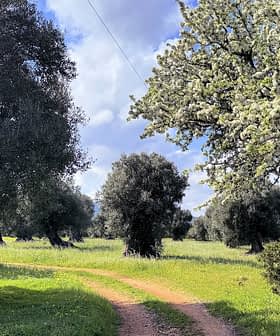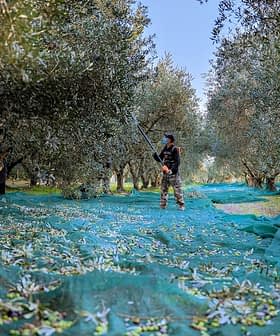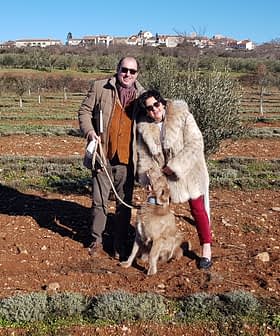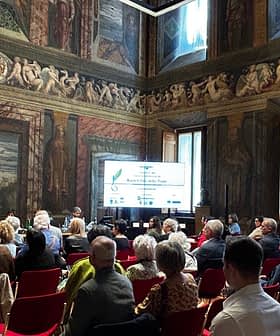Culture Meets Quality at Di Molfetta Pantaleo
The producers behind Di Molfetta Pantaleo believe spreading olive oil culture is the best way to create new customers and value.
 Di Molfetta's olive harvesting team
Di Molfetta's olive harvesting team A broad cultural approach to olive oil production allowed Apulian producers Di Molfetta Pantaleo to pour eight decades of olive growing experience into one bottle of world-class extra virgin olive oil.
Their Coratina monocultivar won a Gold Award at the NYIOOC World Olive Oil Competition for the second year straight.
The biggest challenge for olive producers remains the uncertainty of the weather.
“This is a Coratina extra virgin olive oil nurtured by the native land of the Coratina olive trees, healthy as an olive oil can be, as it has a very high polyphenol count,” Lucia Di Molfetta, the co-owner of the family company, told Olive Oil Times.
The relatively high yield obtained from their grove, the trees’ resilience to common pathogens and their ability to thrive on different soils are key to Coratina’s popularity.
See Also:Producer ProfilesCoratina monocultivar extra virgin olive oils and blends from around the Northern Hemisphere earned 40 awards at the NYIOOC.
“A longstanding family olive farming tradition coupled with the pursuit of quality made the family’s younger generations effectively contribute to a new vision,” Di Molfetta said.
The old press used for decades by Di Molfetta’s ancestors is now a museum. The heavy grinders slowly pulled by animals in 1950 to crush olives have been replaced by state-of-the-art technology in a modern mill.
“The museum allows us to show our visitors where it all started and how it used to work,” Di Molfetta said. “It is an evocative space which is also used for events, as we routinely have local school pupils come to explore the heritage of our region.”
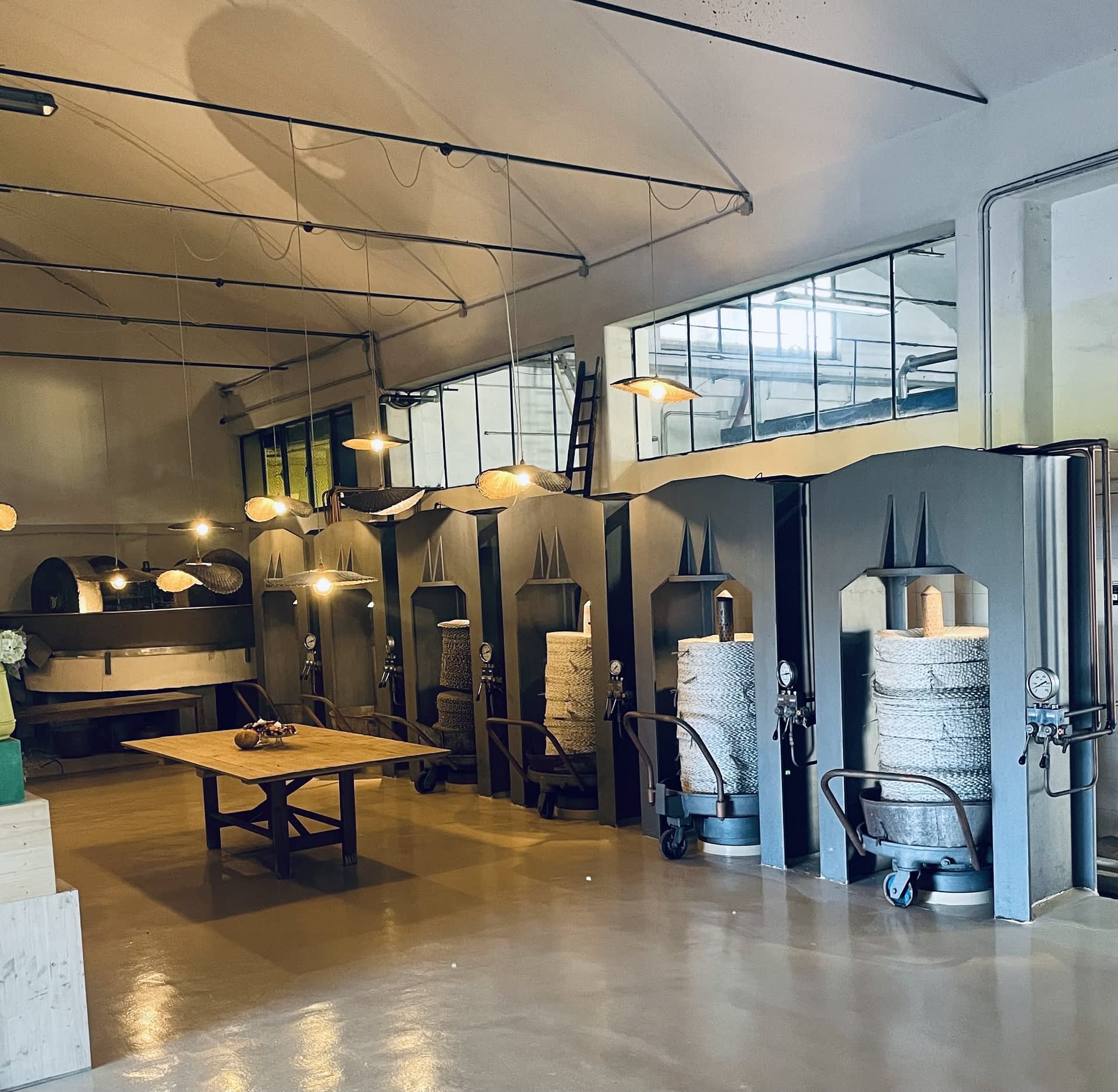
Di Molfetta’s museum, home to its original presses
Both young students and oleotourists can explore the mill’s history and participate in olive milling operations during the harvest season.
“Children are the consumers of the future,” Di Molfetta said. “Given the rush of their parent’s lives, many of them start believing that food comes from supermarkets. Instead, they can learn that food comes from hard work, passion and experience.”
“We have several activities; among them, we developed the tastings,” Di Molfetta said, hinting at the bruschetteria launched by the family, an in-mill restaurant named for bruschetta, an Italian specialty made with sliced toasted bread eaten with olive oil and a garlic clove.
The restaurant allows its clients to taste Di Molfetta’s extra virgin olive oils with dozens of different types of bruschettas and fully immerse themselves in Apulian cuisine. They can also taste an olive beer produced by Di Molfetta’s local partner with olive leaves.
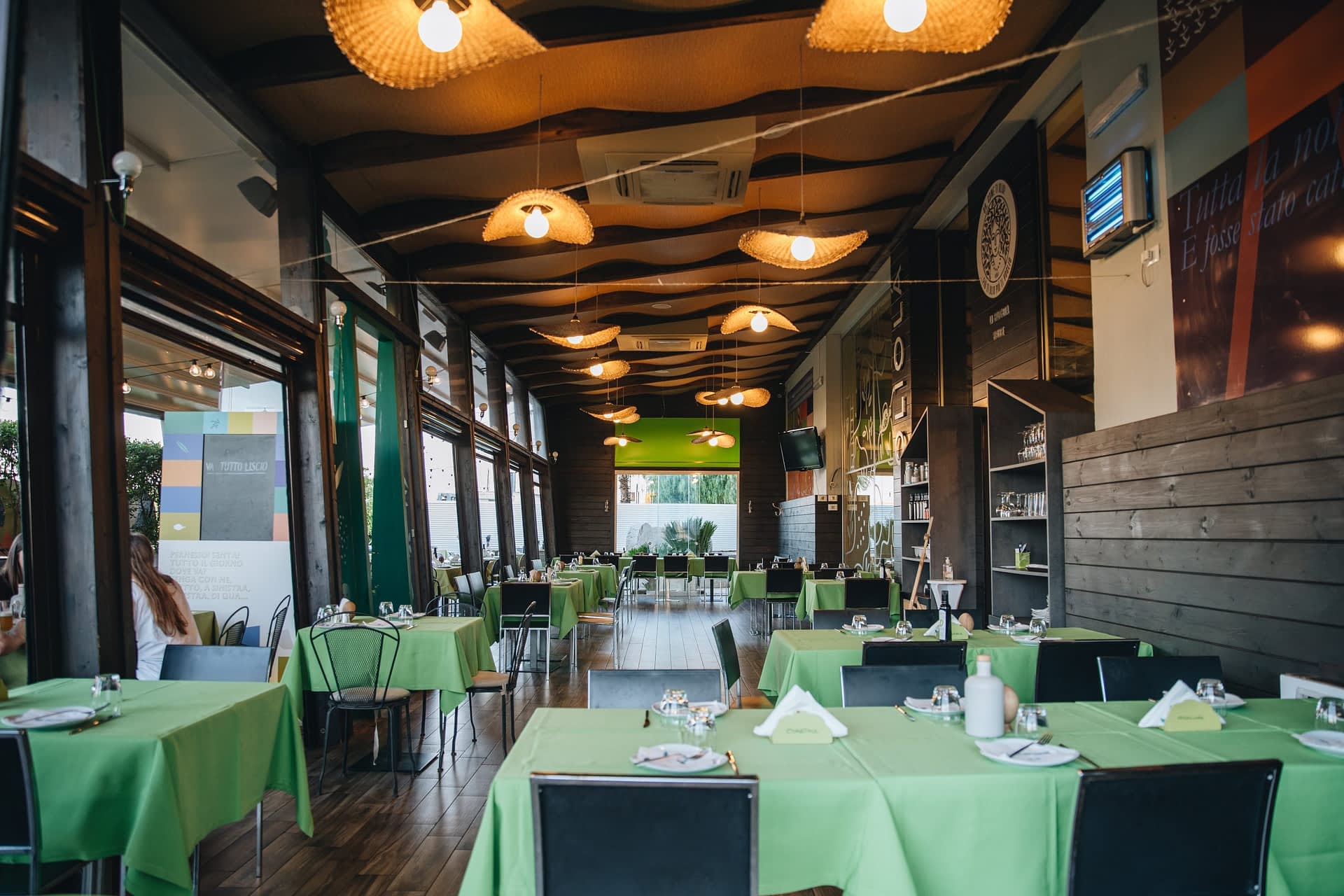
Di Molfetta’s bruschetteria allows guests to enjoy a traditional delicacy with high-quality extra virgin olive oil.
In the restaurant, the family also organizes Apulian cuisine courses for school pupils and tourists, allowing them to explore the many olive oil uses.
Given its mission to spread olive oil culture, Di Molfetta’s experts also organize training days for olive growers focused on specific tasks, such as using organic fertilizers and correct approaches to pruning.
“We consider this very relevant for the whole region, for example, for learning sustainable practices,” Di Molfetta said. “The inverted polyconic vase is taught in the pruning classes.”
A deep understanding of the olive tree and the deployment of good agricultural practices are considered essential by the family for the well-being of the trees and olive oil quality.
While Coratina trees comprise a relevant portion of the 30 hectares of family olive orchards, Di Molfetta also grows Peranzana and Ogliarola trees, native cultivars of Puglia. The family crafts monocultivar extra virgin olive oil from each olive variety and blends them to produce delicate and intense products.
Last year’s harvest in Puglia challenged many experienced growers. Di Molfetta’s olive trees were affected by the months of above-average temperatures experienced across the region.

Hot weather and drought severely impacted Di Molfetta’s olive harvest in Puglia.
On top of that, it was an ‘off-year’ in her olive trees’ natural alternate fruit cycle, resulting in a lower yield. “When you grow olives, you have to work with what nature gives you,” Di Molfetta said.
“Our olive orchards are traditional, and all irrigated,” she added. “Thanks to the extreme care we apply throughout the year, the organic fertilizers we deploy and correct pruning techniques, we could choose the best olives and still produce high-quality extra virgin olive oil.”
However, the conditions for the next crop year are already better than those of the previous one. “It is cool, and it has been raining for four days now,” Di Molfetta said. “This month last year, temperatures rose to 40 ºC.”
The local temperatures reported throughout 2022 were above average, with record highs during summertime.
While it is still too early to predict how the new season will unfold, the conditions have been good. “These days, we are experiencing an extraordinarily beautiful olive flowering in very good climate conditions,” Di Molfetta said. “Rain is good for the olive trees at this moment.”
“Our hope now is that temperatures do not skyrocket like last year,” she added. “We hope it won’t go from abundant precipitation to extreme heat.”
“The biggest challenge for olive producers remains the uncertainty of the weather,” Di Molfetta continued. “Through the years, we have seen climate change; the perception of it, it is absolutely vivid. Due to the extreme weather events that have been increasing significantly in recent years, this is something that we often talk about in our region.”
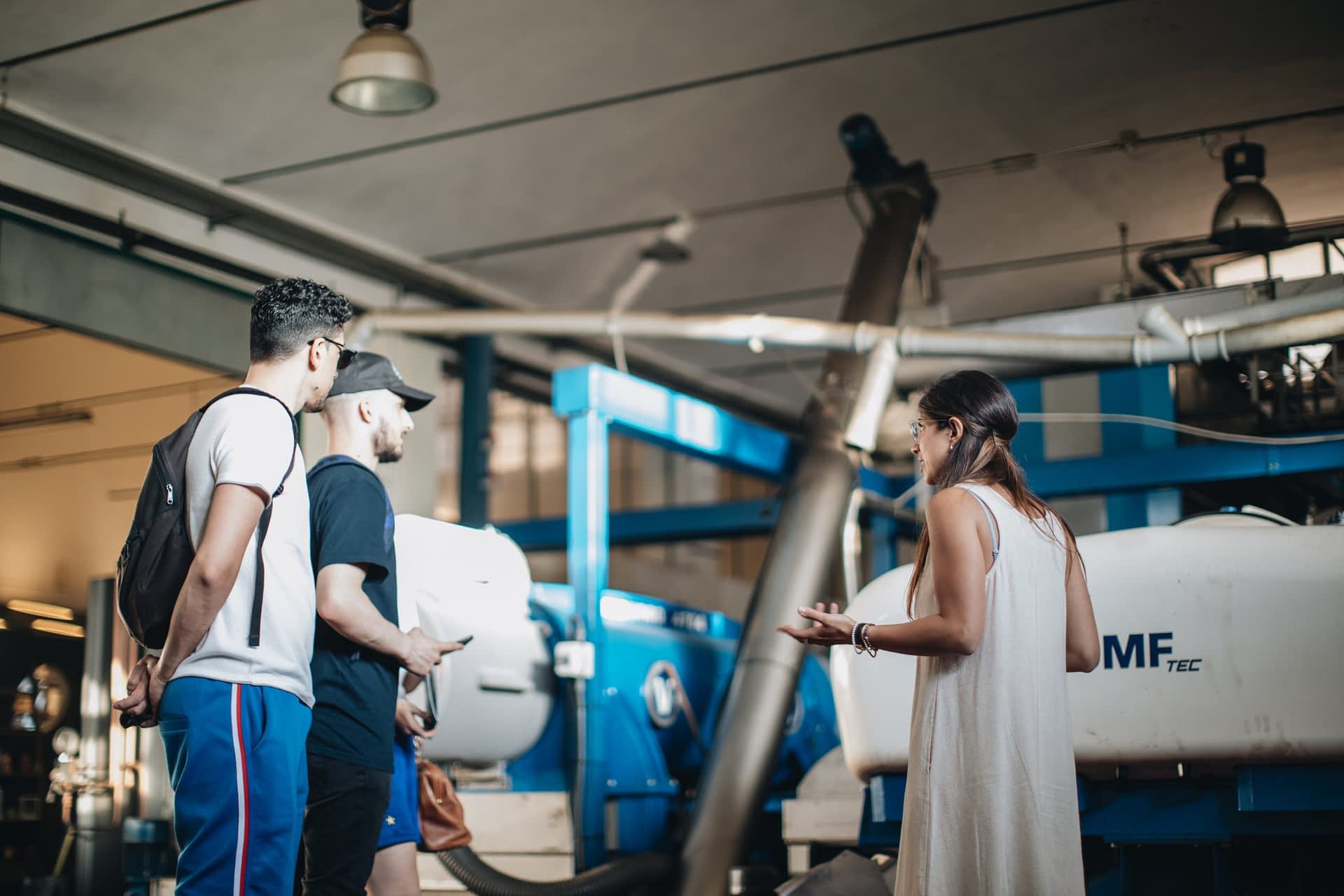
Showing tourists the Di Molfetta’s modern mill
The changing climate is a significant cause of tensions in the international markets. “And on olive oil prices,” Di Molfetta added. “What we are seeing in Spain, where producers are very worried because of the lack of rainfall, is that extra virgin olive oil prices in Spain are aligning with the traditionally higher Italian extra virgin olive oil prices.”
In such a challenging moment for olive farming, these price increases might entice consumers with a new approach to quality olive oils.
“For high-quality producers, what is happening, in the end, might also have some good outcomes,” Di Molfetta said. “Such prices might finally end the bad habit of offering excessively discounted prices, which have been routinely applied by large retailers on olive oil on sale. Maybe consumers will start considering olive oils differently when they will not find it as a special offer at €2 a bottle.”
“The first step of giving value to quality, though, remains to spread olive oil culture so that consumers learn to identify what a quality olive oil is,” she added.
This cultural work has also benefited international sales. “Clients from abroad once used to look for Italian-certified extra virgin olive oils, such as Protected Designation of Origin (PDO) products,” Di Molfetta said. “Now they see that we promote our Apulian origin, the Apulian culture and the Apulian food products; they do not need anything else.”



